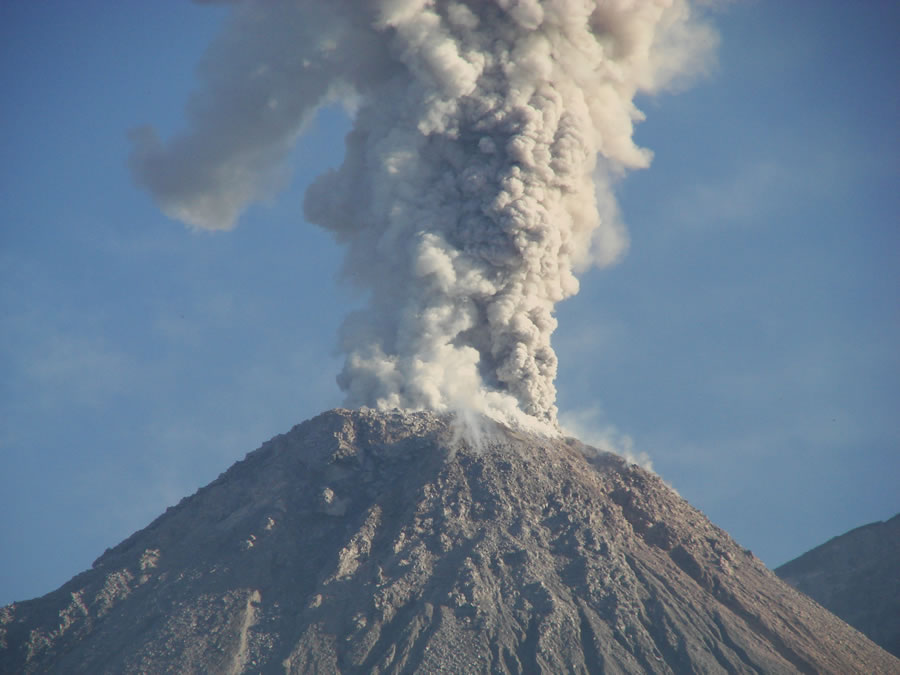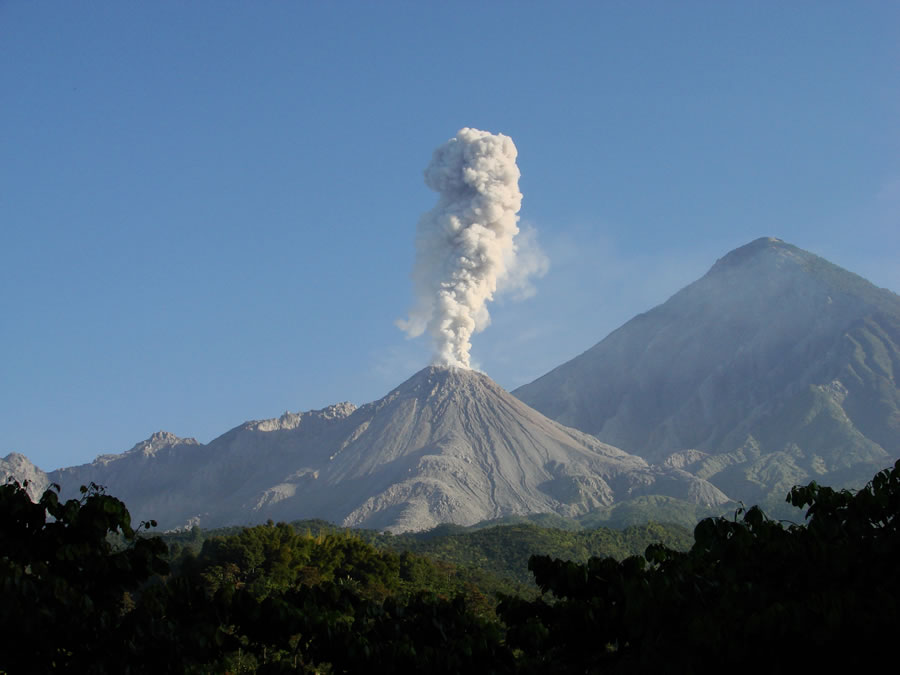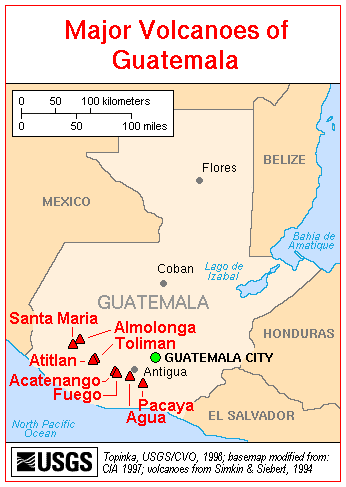Santa Maria erupts, pyroclastic flows detected, Guatemala

Explosions from Santa María's Santiaguito lava dome complex produced ash plumes that rose 800 m above the Caliente dome and drifted SW during March 2 – 3.
Two pyroclastic flows were also detected. Ashfall was reported in multiple areas downwind. Based on analyses of satellite imagery, the Washington VAAC reported that ash was detected on March. 6 The next day an ash plume drifted almost 20 km SouthWest.

During March 7 – 8 the seismic network detected explosions, avalanches, and pyroclastic flows. At least eight pyroclastic flows descended the flank and deposited material in Rio Nima II. Ash plumes rose 1 km causing ashfall in areas downwind.
Symmetrical, forest-covered Santa María volcano is one of a chain of large stratovolcanoes that rises dramatically above the Pacific coastal plain of Guatemala. The stratovolcano has a sharp-topped, conical profile that is cut on the SW flank by a large, 1-km-wide crater, which formed during a catastrophic eruption in 1902 and extends from just below the summit to the lower flank. The renowned Plinian eruption of 1902 followed a long repose period and devastated much of SW Guatemala. The large dacitic Santiaguito lava-dome complex has been growing at the base of the 1902 crater since 1922.
Compound dome growth at Santiaguito has occurred episodically from four westward-younging vents, accompanied by almost continuous minor explosions and periodic lava extrusion, larger explosions, pyroclastic flows, and lahars. (GVP)

INSIVUMEH Guatemala

Commenting rules and guidelines
We value the thoughts and opinions of our readers and welcome healthy discussions on our website. In order to maintain a respectful and positive community, we ask that all commenters follow these rules.